As an Amazon Associate I earn from qualifying purchases.
You can read my full disclosure statement here.
Before you begin planting your seed, it is very important to disinfect seedling supplies and plant pots to prevent viruses and/or bacterial infection in your tender seedlings.
When the holidays are over, I get that itch to begin gardening again. Browsing through seed catalogs on those slow winter days also stirs those gardening desires. After I place my seed orders, I set aside time to disinfect my seed starting supplies and later before transplanting, I will also disinfect all my planting pots.
Seed Starting 101: Essential Seed Starting Equipment
Seed Starting Schedule for Garden Zone 8b
How to Make Money Selling Seedlings
Scroll down to see more related articles on starting seeds or seedling care, at the bottom of this post!
Our favorite Homesteading & Gardening things in our Amazon Store!
Our Garden Harvest Tally Spreadsheet is now available!
Why You Should Wash and Disinfect Seedling Supplies and Plant Pots
It is super important to wash and sterilize your seed starting pots and supplies, so that your young tender seedlings don't pick up any viruses or pathogens from them. If they do, that will weaken or kill your seedlings. After all the hard work that goes into starting your seeds, you don't want all your efforts to go to waist because you used dirty supplies.
Of course, buying new seed starting pots each year, would be the easiest way to avoid this step, but this is not an option when money is tight. Don't forget to also wash and disinfect any planting trays or tools that you use for seed starting as well.
Why You Must Wash the Pots Prior to Disinfecting
Before you can disinfect all your planting trays and seedling pots and 6 packs, you must first remove any and all dirt or potting soil residue from them. This is important, because any dirt or potting soil that remains on them, may weaken the strength of the bleach solution that you need to disinfect them. So don't miss this crucial step!
First create a warm soapy solution and soak them for a bit. Then use a scrub brush to scrub off any debris that is on them. Then rinse well and let dry.
Using Bleach to Disinfect Your Garden Pots
To disinfect, you will want to add some bleach to water, in a container that you can soak the pots in. Don't skimp on the bleach, buy a new bottle that is full strength, don't use an older bottle that has been hanging around for a long time and may have lost some of it's strength.
Ideally the bleach should be 8.25%, and the proportions should be 2 TBSN's of bleach to each gallon of water. The solution should be deep enough to submerge the pots completely.
Step by Step Instructions to Disinfect Your Seedling Supplies:
Using Bleach to Disinfect:
- Scrub the pots clean, inside and out with warm soapy water. Soak in warm soapy water if needed. Remove all dirt and/or soil remnants from each pot.
- Rinse the pots completely from any soap scum.
- Let pots dry completely.
- Create bleach solution of 2 TBSN's of 8.25% bleach to each gallon of water, in a container large enough for the pots to be submerged in.
- Using latex gloves, submerge the pots in bleach solutions and let soak for 30 minutes.
- After the pots have soaked for 30 minutes, rinse them well to remove any lingering bleach and let them air dry.
Using Vinegar to Disinfect:
Another option if you don't want to use bleach, is to spray your supplies down fully with an undiluted vinegar such as a distilled white vinegar. This should be done after washing them well with soap and water. Ideally let the vinegar stay on the items for a good 10-15 minutes and then rinse them well.
After Disinfecting the Pots, it is Seed Planting Time!
Now that your seedling pots and trays and any other supplies are disinfected, it is time to begin planting your seed, or transplanting your tender seedlings into them.
Washing and Disinfecting Your Larger Plant Pots
After you have started all of your seedlings, many of them will need to be up potted into larger pots. These larger pots should also be cleaned and disinfected in the same manor as mentioned above.
I live in a cooler climate here in the Pacific Northwest. Because it is a cooler, shorter growing season here, I choose to grow all of my tomatoes and peppers in pots instead of in the ground. This keeps the roots of the plants warmer which both of these plants appreciate.
So before I do my final transplant into the containers they will be growing in for the summer season, I wash and disinfect those large pots too. It is a huge job, as I grow a LOT of tomatoes and peppers, but it is super important!
I would suggest you do the same for any large pots or containers that you may be planting in as well.
Step by Step Instructions to Disinfect Your Plant Pots:
- Instead of scrubbing the pots clean by hand, I use the hose with a jet spray for most of my pots. If they are really filthy, I will go ahead and scrub where needed.
A close up of a dirty planting pot that I grew tomatoes in last year.
- I use my favorite hose sprayer by Melnor, as shown in the photo. Spray both the interior and the exterior of each pot and rinse well.
- Then I set up a station for where I will submerse each pot into the bleach solution. I use a large bin that my largest pots will fit into. I set it on top of something so I don't have to bend over so far while submersing each pot.
- Create bleach solution of 2 TBSN's of 8.25% bleach to each gallon of water, in a container large enough for the pots to be submerged in. To be honest, I usually fill the bin with about 6-8" of water, and then I just pour a couple of good glugs of bleach into the water.
- While wearing latex gloves, submerge each pot into the bleach solution, bottom first. Then turn the pot sideways and spin it in the solution a couple of times so that it has rotated fully a couple of times in the bleach solution. I don't usually leave these in the solution to soak.
- After the pots have been thru the bleaching station, I let them air dry outside in the sun on the driveway.
Other Articles on Seed Starting and Seedling Care
Seed Starting 101: Essential Seed Starting Equipment
How to Plant Onion Seed Indoors in Winter
How to Plant Seeds Outdoors In Winter Using the Winter Sowing Method
How to Transplant Tomato Seedlings
Want to Remember This?
Please Pin this article "How to Disinfect Seedling Supplies and Plant Pots" to your favorite Gardening Board on Pinterest!


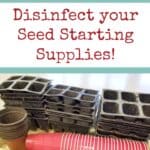

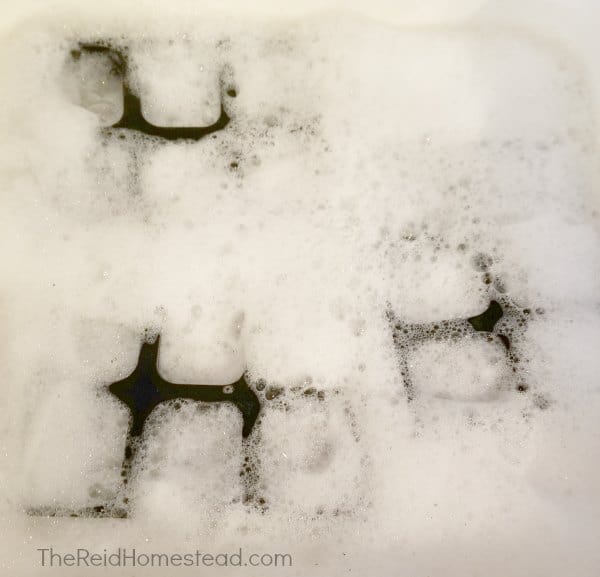
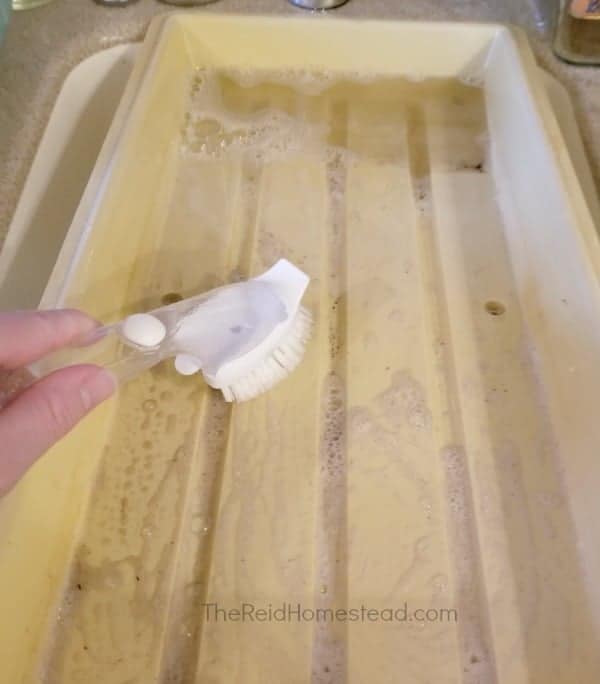

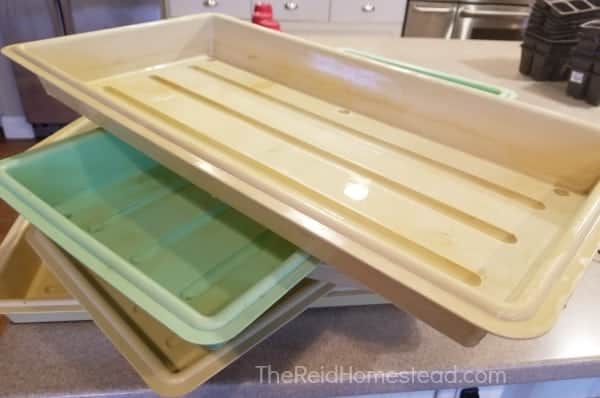
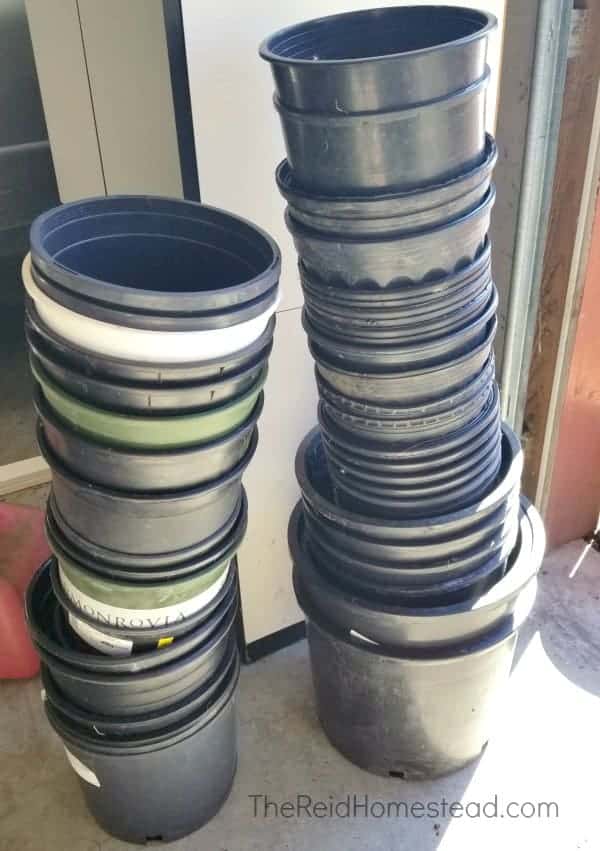
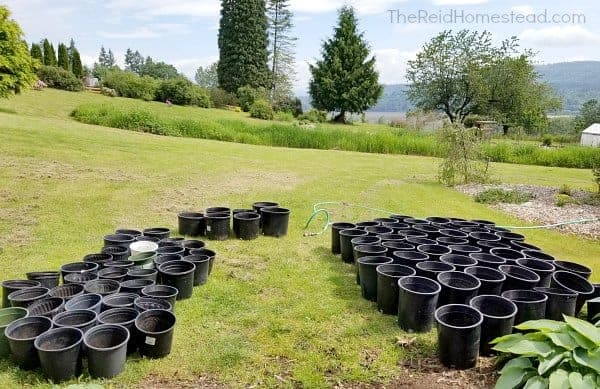
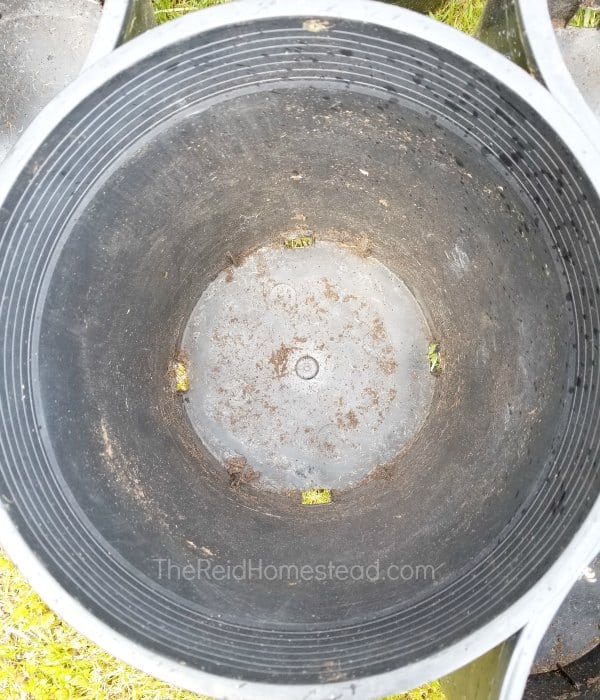

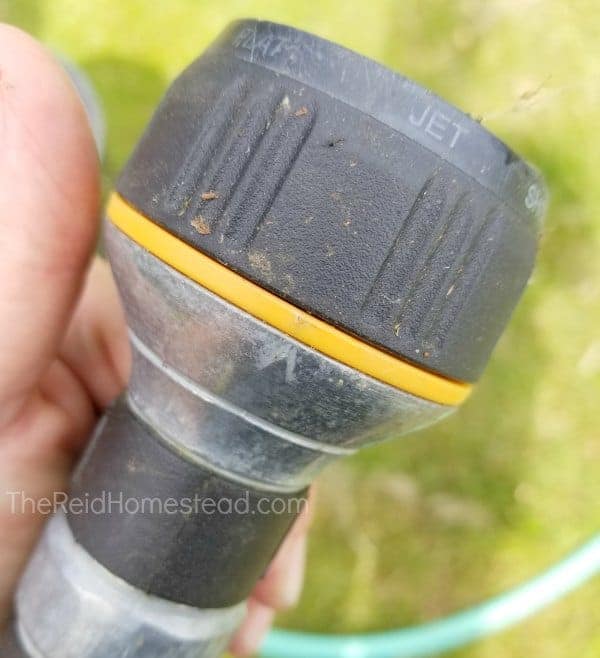



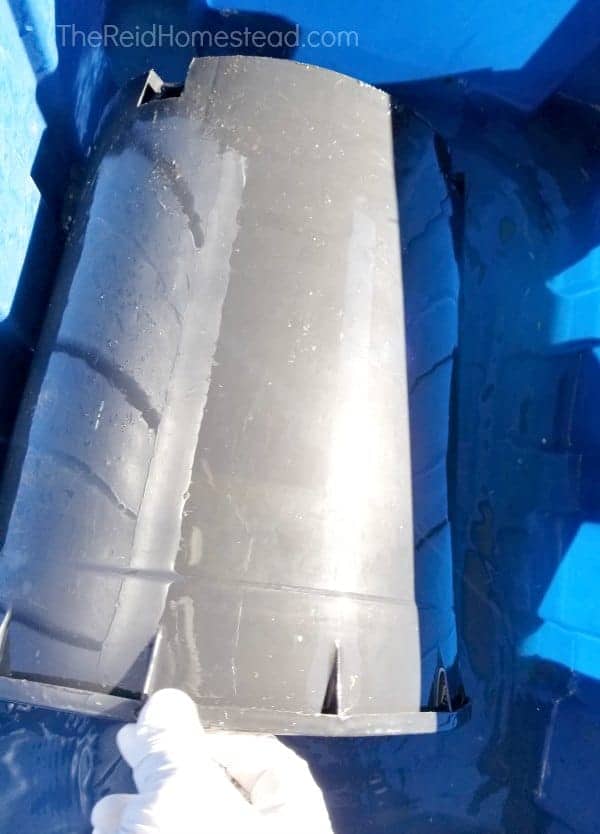
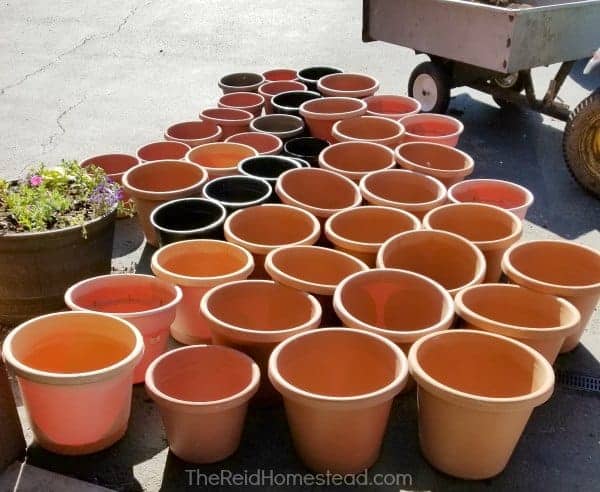

Leave a Reply